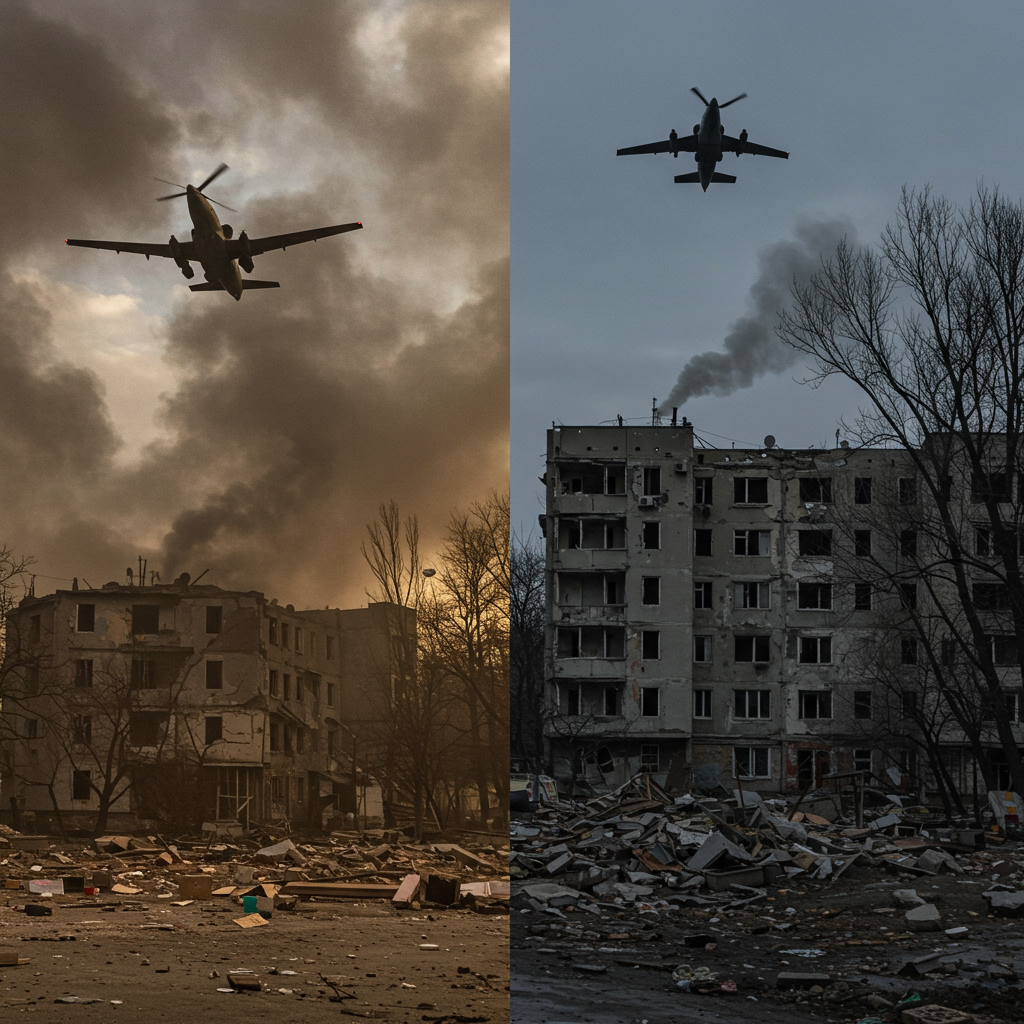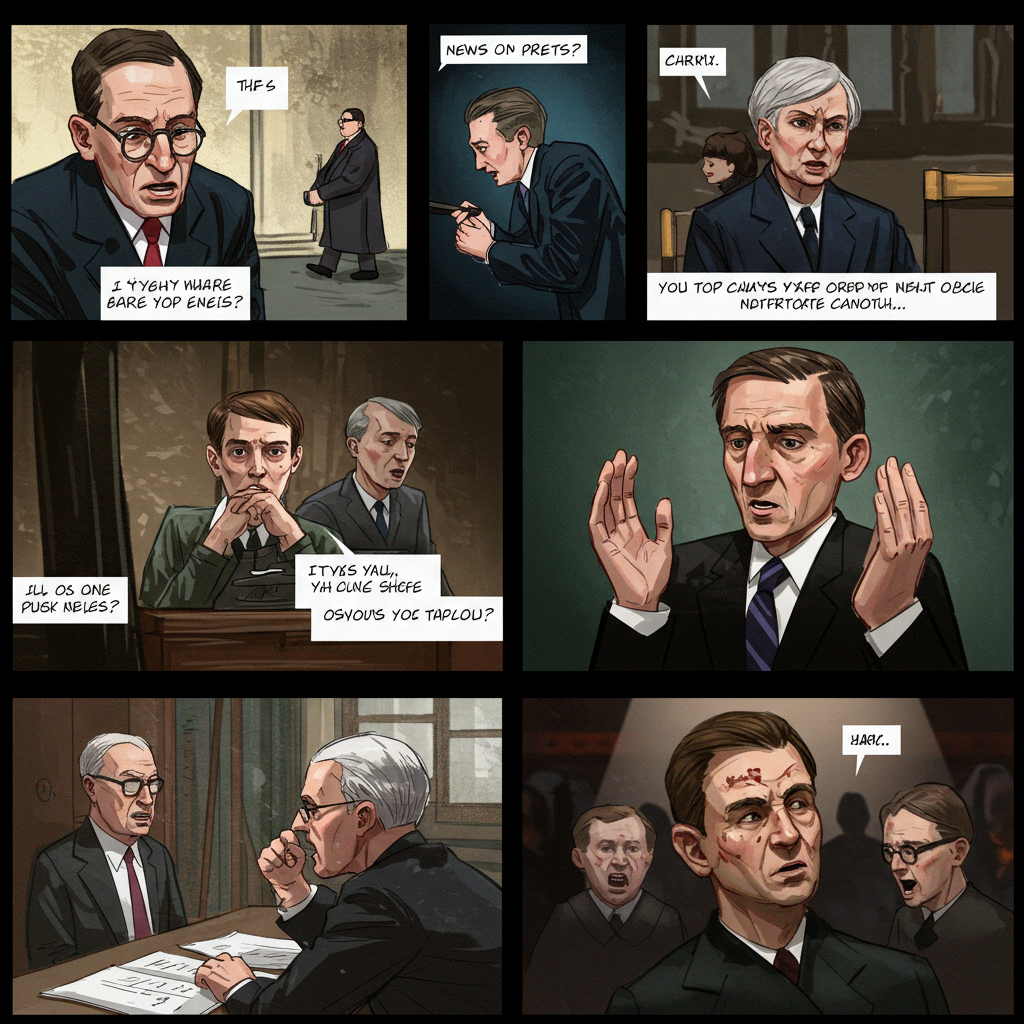ukraine has recently endured what officials describe as one of the most significant aerial assaults from Russia since the conflict began. This intense wave of strikes targeted cities nationwide, causing casualties and widespread destruction. The attack’s timing has drawn particular attention, occurring shortly after former US President Donald Trump publicly criticized russian President Vladimir Putin and announced a potential reversal of a controversial military aid suspension to Kyiv.
The sheer scale of the bombardment underscores the escalating nature of the conflict. Ukrainian sources reported hundreds of drones and dozens of missiles fired across the country in multiple waves. Figures cited range from 550 to over 700 drones and missiles launched. These included various types of aerial munitions like Iranian-made Shahed drones, as well as cruise and ballistic missiles. Despite Ukraine’s air defenses intercepting a significant portion, many struck targets in key urban centers and infrastructure nodes.
Cities far from the eastern front lines bore the brunt of the assault. While the Kyiv region is a frequent target, explosions and damage were reported in the western cities of Lviv and Rivne. Lutsk, a vital transit hub near the Polish border, also suffered heavy impacts. This widespread targeting demonstrates Russia’s capability and intent to strike any part of Ukraine. Tragically, the attacks resulted in multiple deaths, including children in some regions, and numerous injuries, leaving an atmosphere of terror in affected communities.
US Policy and Presidential Rhetoric Under Scrutiny
The timing of this major attack is being heavily scrutinized in light of recent developments in US policy and rhetoric regarding the Ukraine conflict. Just prior to the bombardment, President Trump had expressed growing frustration with Vladimir Putin. He used unusually harsh language, telling reporters, “We get a lot of bullshit thrown at us by Putin, if you want to know the truth.” Trump also stated, “He wants to go all the way, just keep killing people, it’s no good.” This criticism followed a period of dialogue between the two leaders that had yielded no tangible steps towards a ceasefire, a goal Trump has often claimed he could achieve rapidly.
Adding another layer of complexity, the attack followed Trump’s announcement that the US would send more weapons to Ukraine. This marked a reversal of a recent decision to suspend military aid shipments to Kyiv. Reports indicated the suspension had been authorized by US Defence Secretary Pete Hegseth and Under-Secretary of Defence for Policy Elbridge Colby. However, when questioned about who made the decision, Trump reportedly claimed ignorance.
The Controversy Over Military Aid
The temporary pause in US military aid triggered significant controversy and concern among Ukraine’s supporters. Critics labeled the justification for the suspension as “disingenuous.” The Pentagon had reportedly cited low domestic stockpiles as the reason. However, voices in Congress, like House Democrat Adam Smith, argued that US inventories were no lower than they had been previously in the conflict. This led to accusations of an “underlying agenda” by certain officials, notably Elbridge Colby, aimed at curtailing US support for Ukraine.
Military analysts echoed these concerns. Some suggested the pause was driven by individuals like Colby who hold views perceived as less supportive of Ukraine. The decision was seen as questionable, especially given that weapons designated for Ukraine were reportedly ready in locations like Poland. There were fears that the pause could become permanent, potentially weakening Ukraine’s ability to defend itself against intensifying Russian aggression.
Russia’s Posture and Diplomatic Deadlock
Kremlin spokesman Dmitry Peskov responded to Trump’s criticism with relative calmness. He suggested the American leader might be experiencing “emotional overload.” Peskov also acknowledged the US role in facilitating negotiation processes, though he indicated a diplomatic resolution did “not appear possible” at the moment, despite Moscow awaiting dates for a third round of peace talks. This contrasted sharply with earlier, unsuccessful talks, following which neither side seemed optimistic about diplomacy ending the conflict.
Amidst the diplomatic stalemate and the massive aerial attacks, Russia’s military campaign, particularly the summer offensive in eastern Ukraine, continues relentlessly. Peskov stated Russia was “moving forward.” He added, “Each new day the Ukrainians have to accept the new realities.” Expert analysis suggests Russia is preparing to increase the intensity and scale of its attacks, believing its leverage over Ukraine will grow over time. This strategy involves testing Ukrainian defenses and creating buffer zones along the border, potentially influenced by perceived shifts in international support for Kyiv.
Ukraine’s Resilience and Calls for Support
Ukrainian President Volodymyr Zelenskyy strongly condemned the large-scale Russian assault. He described it as a “telling attack” and highlighted that it came despite ongoing efforts to achieve peace and a ceasefire, which he claims Russia consistently rejects. Zelenskyy emphasized that such “brutality cannot be stopped” without “truly strong pressure on the Russian leadership.”
The Ukrainian leader explicitly called out the perceived inaction of global powers. He stated that the “silence of America, the silence of others around the world only encourages Putin.” Zelenskyy reiterated the critical need for sanctions to deprive Russia of resources for fighting. Ukraine heavily relies on modern air defense systems, particularly Patriot missiles, to intercept the growing number of incoming Russian drones and missiles. The potential shipment of 10 Patriot interceptors, reportedly enabled by the reversal of the US aid pause, is therefore vital for Kyiv’s defensive capabilities.
International Reactions and Future Prospects
The massive Russian attacks drew swift condemnation from international partners. European leaders voiced their outrage and called for stronger measures against Moscow. The EU’s top diplomat described the attacks as demonstrating Russia’s intent on “more suffering and the annihilation of Ukraine.” Germany’s foreign minister stated that Putin “does not want peace, he wants to carry on the war,” signaling that further European sanctions were likely.
In Washington, beyond the debate over the aid pause, there have been calls for increased pressure on Russia. Trump himself indicated he would “absolutely” consider new sanctions following the intensified attacks. Some US senators are preparing legislation proposing significant tariffs on Russian exports if Moscow doesn’t engage in good-faith negotiations. The US is also encouraging NATO allies to contribute more air defense systems to bolster Ukraine’s capabilities.
Despite the grim military situation and diplomatic deadlock, some limited exchanges continue. A large prisoner swap recently occurred, with hundreds of soldiers returned by each side. This serves as a rare example of a specific agreement reached during earlier talks being implemented, though it does not signal broader progress towards ending the fighting.
The complex interplay of intensified Russian military action, evolving US policy and rhetoric, and stalled peace efforts creates an uncertain path forward for Ukraine. The scale and impact of the recent aerial attacks serve as a stark reminder of the ongoing human cost and destruction in the conflict.
Frequently Asked Questions
What was the scale and impact of this specific Russian attack on Ukraine?
This Russian aerial assault is considered one of the largest Ukraine has faced since the war began in February 2022. Sources reported hundreds of drones and dozens of missiles were launched, ranging from over 550 to more than 700 munitions in total. The attacks hit cities across Ukraine, including Kyiv, Lutsk, Lviv, and Rivne, causing deaths, injuries (including children), and significant damage to civilian infrastructure.
How does US military aid, particularly Patriots, factor into Ukraine’s defense against such attacks?
Ukraine relies heavily on advanced air defense systems like the US-made Patriot missiles to intercept Russia’s intensifying drone and missile attacks. A recent temporary US suspension of military aid, reportedly authorized by Defense Secretary Pete Hegseth and Under-Secretary Elbridge Colby, caused concern. The subsequent reversal of this pause potentially allows for the shipment of Patriot interceptors, which are crucial for Ukraine’s ability to protect its cities and infrastructure.
What is the current state of peace talks between Russia and Ukraine, and how do leaders like Trump and Putin influence this?
Peace talks between Russia and Ukraine remain stalled, with neither side expressing optimism about a diplomatic resolution currently. Although two rounds of talks occurred earlier, no further meetings are scheduled. While US President Trump has stated a desire to broker peace and claimed he could resolve the conflict quickly, his recent critical remarks about President Putin and ongoing Russian military offensives indicate a complex dynamic that has not yet translated into a ceasefire or negotiation progress. The Kremlin has publicly stated it awaits coordination for new talks but believes a resolution is not possible now.




